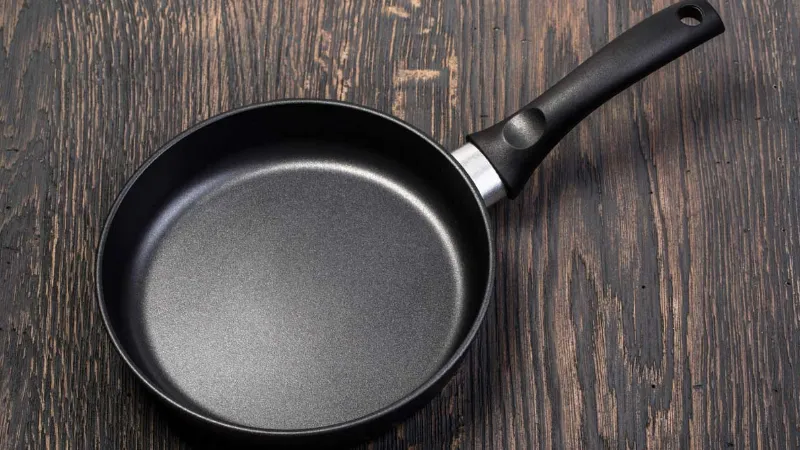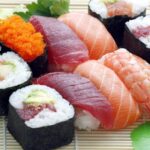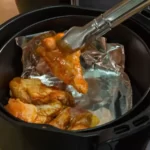Can You Microwave Cardboard? Yes or No
Under supervision, you can microwave pure cardboard containers containing food or drink. Microwaving cardboard containing plastic, wax, ink (unless expressly stated on the label), glue, or metal, on the other hand, is not recommended. To avoid overheating, do not microwave cardboard without any food or drink.
Table of Contents
Can You Put Cardboard in the Microwave?
While it may not appear to be a smart idea on the surface, you can normally microwave cardboard without incident, just as you can microwave paper plates.
Given that paper and cardboard are commonly used to ignite fires, you might assume this isn’t a good idea. However, owing to the nature of how microwaves work, it is not as serious as it appears.
When meals or drinks are microwaved, the water molecules inside them begin to flow at a high frequency. This is what causes them to get hot. Because cardboard does not contain a lot of moisture, it does not heat up as rapidly as food does.
Even if your cardboard absorbs some of the moisture from the food on top of it in the microwave, it is unlikely to reach temperatures high enough to cause combustion, if you use your microwave normally.
That is not to suggest that all cardboard is microwave safe or that it cannot catch fire. There are various things to think about before microwaving cardboard, as you’ll see below.
When Should You Not Microwave Cardboard?
While cardboard is generally safe in the microwave, there are several situations when it is not advised.
To begin, always check the labels on your container to ensure it is microwave safe. That will tick the boxes for the majority of the remaining points. If anything isn’t clearly labeled as microwave safe, don’t microwave it.
Next, only microwave cardboard for brief amounts of time at a time, and never on its own. Food in the microwave with the cardboard is required to absorb the waves, and while your cardboard is unlikely to catch fire, the shorter the period, the better.
Cardboard is frequently created from recycled resources. As a result, your cardboard may contain trace amounts of components that are not microwave safe, such as metal. This is why it’s critical to always read the label on your container.
When it comes to unsafe materials, you definitely don’t want to microwave items containing metal. The most prevalent form of container in this category are those with metal handles that you may obtain from a Chinese takeout restaurant.
Even if your container does not include metal, other materials should be avoided. Many cardboard containers have a waxy layer that, when heated, may release substances. Others have glue to keep them together. Some even have ink written on them, which, when cooked, might bleed into your food.
I’m not trying to terrify you with all of these reasons why microwave cardboard doesn’t always make sense, but I do want you to be aware of them so you continue with caution. Again, it is better to check the package to see whether it expressly states that product is microwave safe. If it does, you’re all set.
What Cardboard Cannot Be Microwaved?
While many varieties of cardboard are safe to microwave, other coatings may melt on your food or cause other problems in the microwave.
To be on the safe side, do not microwave cardboard that has a wax or plastic covering.
You should also avoid microwaveing cardboards with a lot of colours or glues on them since they might leach chemicals into the meal you’re heating up.
These substances might be harmful to your health. Furthermore, the whole point of microwaving your meal on cardboard is for convenience; you don’t want it to taste so horrible that you have to toss it away.
If you have a cardboard container with any metal in it, such as a handle, you should not put it in the microwave.
Metal and microwaves do not mix and will almost probably result in a damaged microwave or, in the worst-case scenario, a fire. As a result, always double-check your cardboard for metal.
Can Cardboard Takeout Boxes Be Microwaved?
One of our favorite aspects of dining out is the leftovers that we get to enjoy when we come home (sometimes even that very same night). Can you, however, microwave the cardboard takeaway boxes in which your meal is delivered?
In general, cardboard takeaway boxes may be microwaved as long as there are no metal handles and they are not coated with plastic or wax, which might melt into your meal.
Because most cardboard contains very little moisture, it does not heat up as rapidly as your meal.
Because of the low moisture content, it is safe to microwave as long as it is not coated or has any metal attachments. We never microwave anything that contains metal!
Can Cardboard Pizza Boxes Be Microwaved?
One of life’s most delectable joys is leftover pizza. Obviously, you can’t microwave the full 18-inch pizza box unless you have the world’s largest microwave on hand.
But what if you only have a tiny leftover box or want to utilize a portion of it as a plate?
In such situation, you may certainly microwave your cardboard pizza box because it does not have any plastic or wax coatings and no metal attachments.
As an added advantage, cardboard is porous and doesn’t frequently get as hot as traditional plates and bowls, so you won’t wind up with a burning hot plate and chilly pizza.
Is it possible to reheat meals in a cardboard box?
Yes, you may reheat meals in a cardboard box, but only in moderation. This implies that reheating can only be done for a certain amount of time.
Prolonged heating can cause the cardboard box to catch fire since it is a relatively quick conductor of fire and so easily catches fire. Normally, cardboard or corrugated board is a flammable substance that will catch fire if exposed to an open flame and/or a spark.
Despite this, the microwave device is designed to operate at lower temperatures than the ignition threshold of cardboard, therefore the risk of cardboard burning while reheating food is minimal.
Furthermore, pure pulp and wood fiber are used to produce cardboard boxes, which adds to the optimal nature for microwaving food.
Alternatively, cardboard can include trace amounts of metal compounds to ensure that the pieces remain intact and prevent water leakage. Heating cardboard boxes in such situations might be hazardous.
The general guideline is to avoid heating meals in the cardboard box for an extended period of time. Because cardboard boxes can retain up to 12% moisture, the water level will begin to decline when heated.
In this situation, the level falls to 1% or less. If the pulp or fiber dries out too much, it becomes flammable.

Conclusion
As you know, microwaving cardboard is typically regarded safe due to its low moisture levels, as long as you follow a few essential principles.
Check to see if the cardboard has any plastic or wax coatings, or if there is too much glue or color in the packing.
These can melt and leak into your meal, generating not only unpleasant tastes but also possibly harmful health repercussions.
To stay on the safe side, microwave your cardboard for the shortest length of time feasible.
If you’ve received a cardboard takeout container or coffee cup, check to determine if it’s microwave safe. If it states not to microwave it, then move the contents to a microwave-safe plate or cup.
You should also make certain that your cardboard container has no metal handles or attachments. They may quickly heat up and ignite, causing your food or the microwave to catch fire.
This is especially true of tinfoil, since the little creases in the foil bounce microwaves back and forth, resulting in tremendous heat and friction and sparking.
Remember not to put your cardboard in the oven unless it’s only to keep anything warm, since the dry heat is more likely to cause it to catch fire.
To reheat your meal safely and evenly, transfer any contents from the cardboard container to an oven-safe baking sheet or aluminum container.























